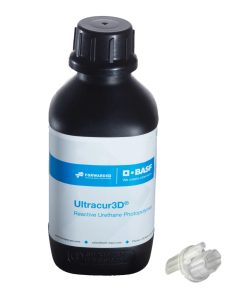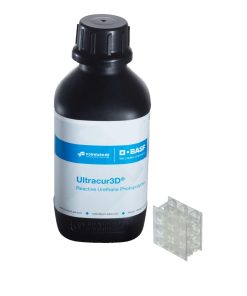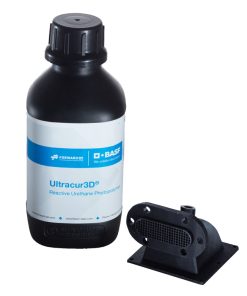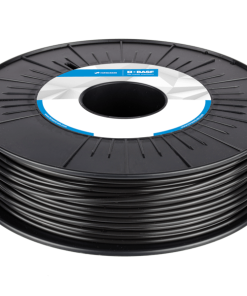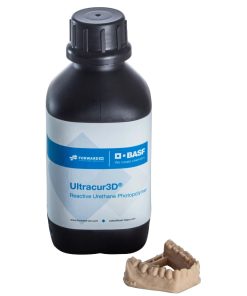BCN3D ABS Filament – Black BCN3D
$ 39,95 $ 23,97
Overview
ABS (acrylonitrile butadiene styrene) is one of the most common technical materials in several industries around the globe. Its an engineering material which combines rigidity and resistance to impacts. It is the ideal material for technical applications and moving parts.
Traditionally a challenging material to print with FFF printers, it has been re-formulated to ensure good interlayer adhesion and to reduce warping. Our grade allows for excellent dimensional accuracy and high durability.
Compatibility: Find out the BCN3D printers and filaments compatibility
Enable Raft support: To prevent chipping the printing surface.
Applications
- Parts under high mechanical stress
- Strong prototypes and end-use parts
- Aesthetic models
- Commonly used on electronic or appliances cases, suitcases and phones
- Precision fits, knobs, lids and buttons
- Rigid models with snap-fit joints


BCN3D Filaments
Industrial-grade materials manufactured by BASF and Mitsubishi Chemical and designed to deliver outstanding results for BCN3D printers.


Properties
- Attractive matt surface quality
- Good stiffness and dimensional stability
- High impact resistance, even at low temperature (-10 ºC)
- Good heat resistance, up to 100 ºC
- Improved printability
- Water resistant
- Low resistance to organic solvents
Datasheets:
Technical Information

High temperature material that can take a hit
ABS is able to withstand high service temperature. Moreover, its excellent impact strength makes it ideal for those applications where vibrations or blows would fracture materials such as PLA or PET-G.

How to Print
Printer Settings
|
Extruder temp. 240° C – 260° C |
Bed temp. 90°C |
||
|
Cooling fan 0-25% |
Speed 40-80mm/s |
||
|
Min. layer height 0.1-0.2mm |
Enable Raft support: To prevent chipping the printing surface. |
||
For BCN3D Stratos users:
Get a proper printing profile for ABS using the ones integrated into the BCN3D Stratos.
Bed adhesion:
To ensure good bed adhesion use Magigoo.
Recommendations:
- Store it in an airtight container with desiccant
- Enclosure is required for BCN3D Sigma and Sigmax printers
- Once the part is printed, remove carefully the piece to avoid chipping the glass. The removal of the object is easier if you just apply water on the glass
Gallery

High thermal and mechanical resistance
ABS is perfect for creating parts that are very mechanically resistant, with high thermal resistance properties, as well.


Highly-functional and mechanically strong parts
ABS is ideal for parts under high mechanical stress with and attractive matt finish.

Validate prototypes
Its great mechanical and thermal behavior make ABS the ideal material for testing prototypes before entering full production.


Product design end-use parts
For the DAYNA motorcycle components in contact with batteries or electronics, such as this light bulb grab, ABS was implemented for its structural resistance, thermal resistance, and low static charge.

Car logo positioning template jig
This template allows the operator to position the sticker of the vehicle’s nomenclature in the correct place. This template has a neodymium magnet inside that allows the part to adhere firmly to the sheet metal.


Lower drill positioning tool
The biggest part you can find today in Nissan, this tool is composed of 5 connected parts with a total longitud of 1 metre. This tool indicates the drill placement to the operator. The tool incorporates some bushings so that the part lasts longer and does not damage the plastic, which in this case is ABS.

Customized tooling
This fixture made from ABS serves to ensure that this dimensional metrology machine has retained the exact measurements between the design and manufacturing stages.


Product design prototype
While other rovers contain metal conveyor belts, the Clearwater team was looking for something more lightweight. In total, ¾ of the rover is 3D printed: the hulls in ABS for its toughness against sea conditions; ABS for the springs and bridge; TPU for the flexible, rubbery bristles; and PLA for some more rigid parts.

Product design prototype
After a prototyping process using PLA, for the final version of this layered grill and cutter, ABS provided the rigidness needed for the cutter.

| Spool Size | 750g, 2500g |
|---|
Professional packing and fast shipping
Due to our longstanding partnership with UPS FedEx DHL and other major global carriers, we are able provide a range of shipping options. Our warehouse staff is highly trained to package your goods exactly as per the specifications we offer. Before shipping the goods are carefully inspected and secured. Everyday we deliver thousands of packages to customers from all over the world. This is a testament to our commitment to be the largest online retailer worldwide. The warehouses and centers for distribution are situated in Europe and the USA.
Orders with more than one item are given processing time for each item.
Before shipping, we will conduct a thorough inspection of the items you've ordered. Currently, most orders are shipped within 48-hours. Expected delivery time is between 3 and 7 days.
Returns
The stock is dynamic and we do not fully manage it because of the fact that multiple stakeholders are involved, including our factory and warehouse. The actual levels of stock can change at any moment. It's possible that the stock may run out after your order has been placed.
The policy is 30 days. If you haven't received the product within 30 days, we are not able to issue a refund or an exchange.
For your item to be returned, it must be unopened and in the same state as you received it in. It must also be in the original packaging.
Related products
3D Printer Parts
3D Printer
3D Printer Accessories
3D Printer Parts
3D Printer Resin
3D Printer Resin
3D Printer Accessories
3DFS – Compatible Enclosure with HEPA Cover For UltiMaker S3 3DFS
3D Printer Resin
3D Printer Accessories
3D Printer Parts
3D Printer Resin
3D Printer Resin
3D Printer
3D Printer Parts
3D Printer Parts
3D Printer Parts
3D Printer Parts
Bambu Lab Stainless Steel Extruder Unit – P1 Series Bambu Lab
3D Printer Resin
3D Printer Parts
3D Printer Resin
3D Printer Accessories
3D Printer Resin
3D Printer Parts
3D Printer Accessories
3D Printer Resin
3D Printer Resin
3D Printer Resin
3D Printer Accessories
3D Printer Parts












